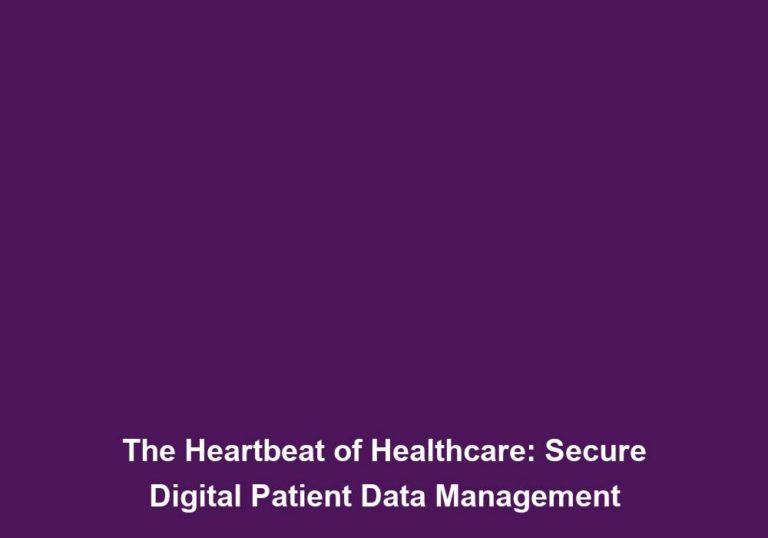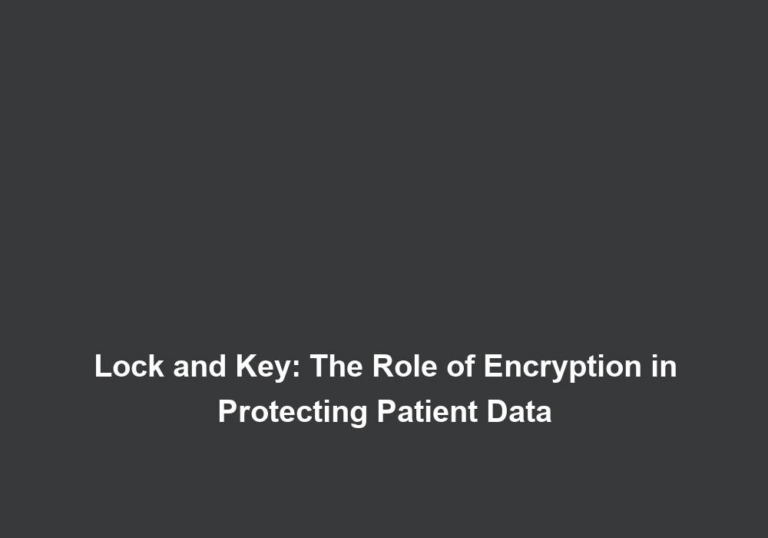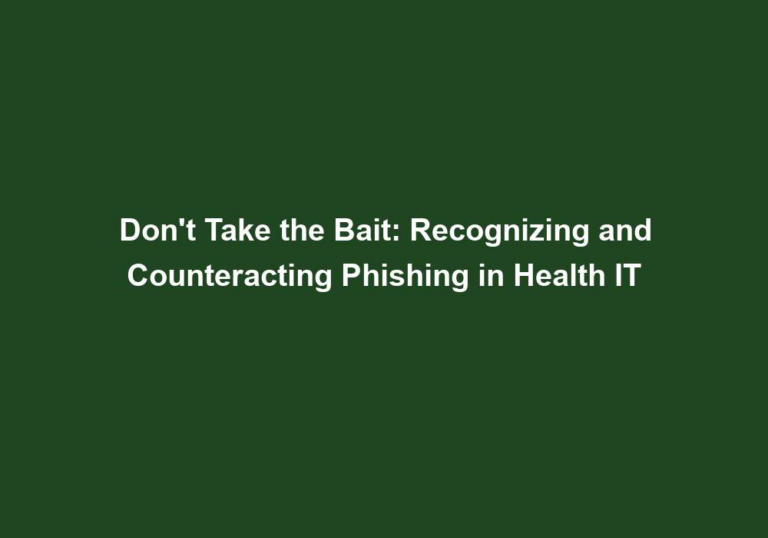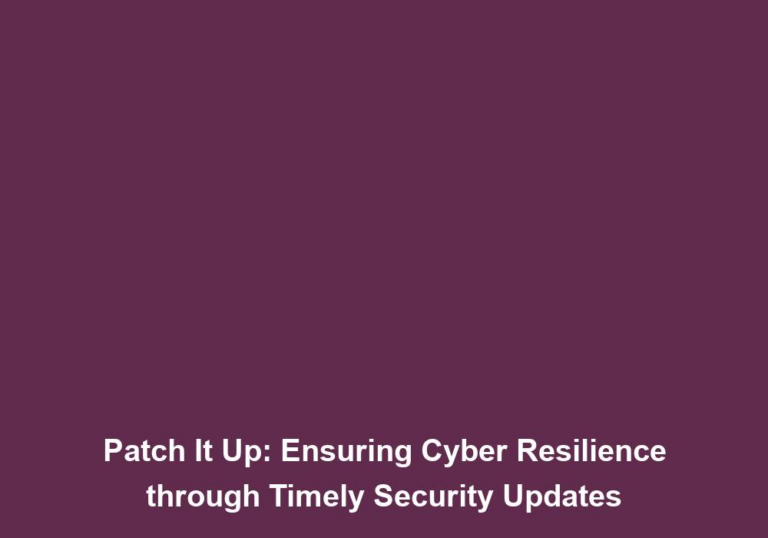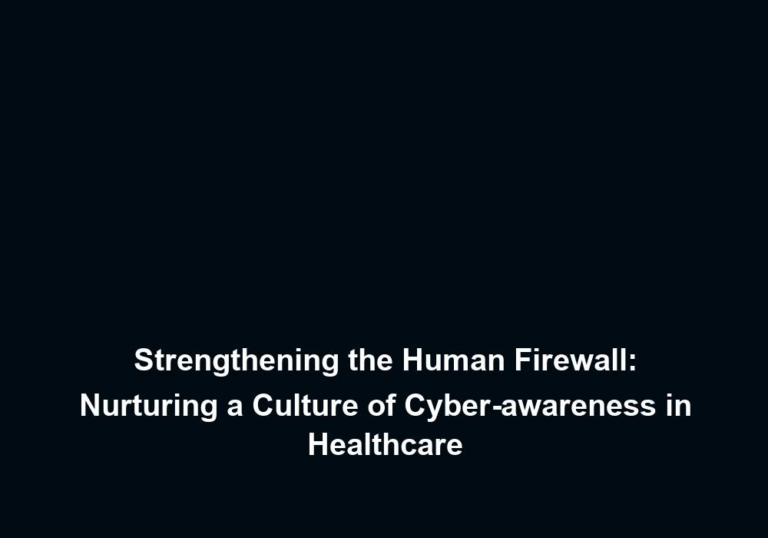Cyber Smarts: Promoting Data Protection through Training and Awareness
In today’s digital world, data protection has become a critical concern for individuals and organizations alike. With the increasing number of cyber threats and data breaches, it is essential to prioritize cybersecurity and promote data protection through training and awareness. In this article, we will delve into the importance of cyber smarts, explore effective strategies for promoting data protection, and highlight the role of training and awareness in mitigating cyber risks.
Understanding the Significance of Cyber Smarts
Cyber smarts refer to the knowledge, skills, and behaviors required to protect sensitive information and assets from cyber threats. It encompasses a wide range of practices, including safe browsing habits, strong password management, regular software updates, and cautious online behavior. By cultivating a culture of cyber smarts, individuals and organizations can effectively safeguard their data and minimize the risk of falling victim to cyber attacks.
The Importance of Safe Browsing Habits
Safe browsing habits are essential in maintaining data protection. Individuals and organizations should be cautious when clicking on links or downloading files from unknown sources. Cybercriminals often use deceptive tactics, such as phishing emails or malicious websites, to trick users into providing sensitive information or installing harmful software. By educating users about the potential risks and providing guidelines on safe browsing practices, organizations can significantly reduce the likelihood of falling victim to these threats.
Strengthening Password Management
Strong password management is crucial in protecting sensitive data. It is recommended to implement password policies that require a combination of uppercase and lowercase letters, numbers, and special characters. Encouraging the use of password managers can also enhance security by enabling individuals to generate and securely store complex passwords for different accounts. By emphasizing the importance of strong passwords and providing guidance on password management best practices, organizations can enhance data protection.
The Significance of Regular Software Updates
Regular software updates play a vital role in maintaining data protection. Updates often include security patches that address vulnerabilities identified by software developers or security researchers. By regularly updating operating systems, applications, and security software, individuals and organizations can ensure that their systems are fortified against known cyber threats. It is important to educate users about the importance of keeping their devices up-to-date and provide instructions on how to enable automatic updates for optimal protection.
The Role of Training and Awareness
-
Educating Employees: Organizations must prioritize cybersecurity training programs to ensure that their employees possess the necessary knowledge and skills to protect sensitive data. Such training sessions should address topics like recognizing phishing attempts, utilizing secure communication channels, and handling confidential information securely. By investing in comprehensive training programs, organizations can empower their employees to become the first line of defense against cyber threats.
-
Creating a Security Mindset: Training programs should not only focus on imparting technical knowledge but also on fostering a security mindset among employees. This involves emphasizing the importance of data protection and instilling a sense of responsibility towards safeguarding sensitive information. By promoting a security-conscious culture, organizations can significantly reduce the likelihood of data breaches caused by human error.
-
Regular Updates and Refreshers: Cybersecurity threats are ever-evolving, requiring organizations to stay up-to-date with the latest trends and best practices. Training programs should be regularly updated to reflect emerging threats and provide refreshers on essential cybersecurity concepts. By keeping employees informed and equipped with the latest knowledge, organizations can effectively combat new and sophisticated cyber threats.
Developing Comprehensive Training Programs
Comprehensive cybersecurity training programs should cover a wide range of topics to ensure that employees have the necessary knowledge to protect sensitive data. These programs can include sessions on recognizing and reporting potential threats, understanding the importance of secure communication channels, and implementing data protection measures. By providing employees with a holistic understanding of cybersecurity, organizations can enhance their overall security posture.
Fostering a Security-Conscious Culture
In addition to technical knowledge, it is crucial to foster a security-conscious culture within organizations. This involves creating an environment where employees understand the importance of data protection and actively contribute to safeguarding sensitive information. Organizations can achieve this by promoting open communication about cybersecurity, encouraging employees to report suspicious activities, and recognizing and rewarding individuals who demonstrate exemplary security practices.
Continuous Learning and Adaptation
Cybersecurity is an ever-changing field, with new threats emerging regularly. To stay ahead of cybercriminals, organizations must ensure that their training programs are regularly updated to reflect the latest trends and best practices. This can involve providing refresher courses, organizing workshops and seminars, or subscribing to industry publications and newsletters to stay informed about emerging threats. By fostering a culture of continuous learning and adaptation, organizations can effectively mitigate cyber risks.
Strategies for Promoting Data Protection
-
Implementing Strong Password Policies: Weak passwords are one of the leading causes of data breaches. Encourage the use of complex and unique passwords by implementing password policies that require a combination of uppercase and lowercase letters, numbers, and special characters. Additionally, encourage the use of password managers to securely store and manage passwords.
-
Enabling Multi-Factor Authentication: Multi-factor authentication adds an extra layer of security by requiring users to provide additional credentials, such as a fingerprint or a unique code sent to their mobile device. By enabling multi-factor authentication for critical systems and applications, the risk of unauthorized access to sensitive information is significantly reduced.
-
Regular Data Backups: Data loss can occur due to various reasons, including cyber attacks, hardware failure, or human error. Regularly backing up data ensures that even if a breach or data loss incident occurs, the impact can be minimized. Encourage individuals and organizations to establish automated backup routines and store backups in secure locations.
-
Implementing Firewalls and Antivirus Software: Firewalls and antivirus software act as the first line of defense against cyber threats. These tools help detect and block malicious activities, preventing unauthorized access and potential data breaches. It is crucial to ensure that firewalls and antivirus software are regularly updated to protect against emerging threats.
-
Securing Wi-Fi Networks: Wi-Fi networks can be vulnerable to cyber attacks if not properly secured. Encourage individuals and organizations to secure their Wi-Fi networks by using strong encryption protocols (such as WPA2 or WPA3), changing default passwords, and disabling remote management.
-
Promoting Phishing Awareness: Phishing attacks remain one of the most common tactics used by cybercriminals. Educate individuals about the signs of phishing attempts and provide tips to identify and report suspicious emails or messages. Regularly test employees’ awareness through simulated phishing campaigns to reinforce the importance of vigilance.
The Importance of Regular Vulnerability Assessments
Regular vulnerability assessments help identify potential weaknesses in an organization’s systems and networks. By conducting these assessments, organizations can proactively address vulnerabilities and ensure that appropriate security measures are in place. Vulnerability assessments can be performed by internal teams or outsourced to specialized security firms. By regularly assessing and addressing vulnerabilities, organizations can significantly enhance their data protection efforts.
Collaboration with IT and Security Teams
To effectively implement data protection strategies, collaboration between IT and security teams is crucial. IT teams can ensure that systems and networks are properly configured and updated, while security teams can monitor for potential threats and respond to incidents. By fostering collaboration and communication between these teams, organizations can create a unified approach to data protection and cybersecurity.
The Way Forward
In an increasingly interconnected world, promoting data protection through training and awareness is no longer optional; it is imperative. By cultivating a culture of cyber smarts, organizations and individuals can defend against evolving cyber threats and protect their valuable data. Through comprehensive training programs, organizations can empower their employees to become proactive defenders of data security. By implementing effective strategies and best practices, we can collectively create a safer digital ecosystem for everyone.
Remember, cybersecurity is an ongoing effort, and staying informed about the latest threats and trends is crucial. By combining knowledge, awareness, and proactive measures, we can foster a resilient digital environment where data protection becomes second nature. Stay vigilant, stay informed, and prioritize cyber smarts to safeguard your data and contribute to a secure digital world.


